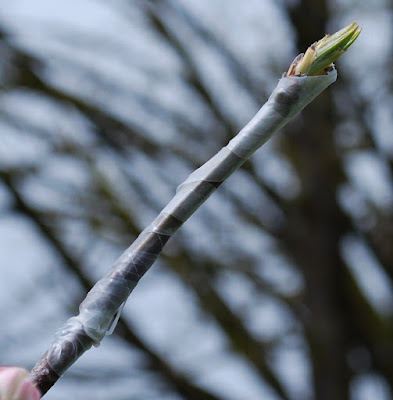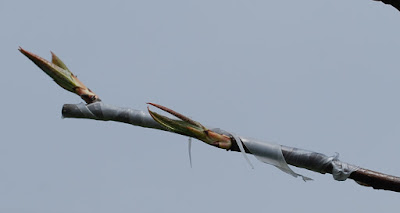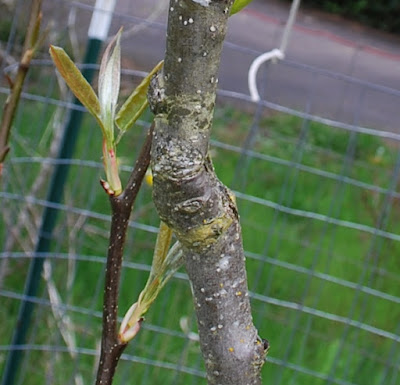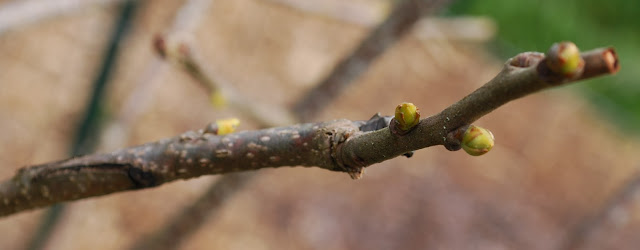 |
| European Plum Yakima, Whip/Tongue. One Month. 4.16.27 |
Here are some of my grafts from late winter and from years before. There are too many to picture them all.
The European pears here are on what was a new bare-root multigraft. That may not give them the best start, but at least the buds remain viable after one month and are swelling. Yellow Egg already had swelling buds, which may be why the new growths appear damaged. It's wait and see to see if they grow.
 |
| European Plum Yellow Egg, Whip/Tongue. One Month. 4.16.27 |
 |
| Asian Pear Chojuro One Month. 4.16.17 |
I think Asian and European pears are really easy The grafts here are added to a tree of the Asian x European pear hybrid, "Maxie". All but the Chojuro are from my own trees. The Chojuro was from Home Orchard Society scion exchange last month. The wrapping is different because I experimented with melted candle wax. I think plastic strips or parafilm are probably easier to work with but they are all OK for the graft.
The Nijiseiki was from last year and is on a Hosui Asian pear. It took and grew nicely.
The older grafts are examples of how they look after a few years. With my plum and apple grafts, most of the graft sites are no longer easy to identify. They merged together almost seamlessly.
 |
| Asian Pear Hosui. Two Month. 4.16.17 |
 |
| Asian Pear Hamese. Two Month. 4.16.17 |
 |
| Asian Pear Nijiseiki. One Year. 4.16.17 |
Chocolate persimmon grew about 3 inches last year. Some species grow rapidly and long, and others take their time. This year, I suspect it will grow the same as the stock tree, a Saijo persimmon.
 |
| Asian Pear Shinseiki. Cleft Graft. 4 years. 4.16.17 |
The ginkgo grafts barely grew last year when I grafted them, but the buds remained healthy looking. The understock did grow new branches. This winter, I pruned off those new branches. The first one has bud damage - slugs? rabbits? voles? but the second one is looking OK. These are as exciting as any, because they mean that I can keep the ginkgo tree, in a sense, that I grew from seeds that my Dad collected almost 20 years ago. That tree is around 25 feet tall, so obviously I can't transplant it.
 |
| Unknown European Pear on Asian Pear. 4 Years. Whip/Tongue. 4.16.17 |
 |
| Chocolate Persimmon. Whip Tongue. One Year. 4.16.17 |
 |
| Male Ginkgo on Ginkgo Seedling. One Year. 4.16.17 |
 |
| Male Ginkgo on Ginkgo Seedling. One Year. 4.16.17 |